Contents
Introduction
Hans Wallach was a pioneering German-American psychologist known for his influential contributions to the fields of perception and psychophysics. His work significantly advanced the understanding of human sensory systems, particularly in the areas of auditory and visual perception. Wallach’s innovative experiments on motion perception, sound localization, and visual illusions helped shape the modern study of perception, providing insight into how humans process sensory information. His research has left an indelible mark on both experimental psychology and cognitive neuroscience, influencing generations of psychologists and researchers.

This article delves into Wallach’s life, his major contributions to the field of psychology, and the lasting impact of his work on modern scientific thought, particularly in the realms of sensory and perceptual processes.
Early Life and Education
Hans Wallach was born on September 28, 1904, in Berlin, Germany. Growing up in a scientifically inclined family, Wallach developed an early interest in understanding human perception and cognition. He attended the University of Berlin, where he studied physics and psychology, two fields that would deeply inform his later work. The rise of the Nazi regime forced Wallach to emigrate to the United States in the 1930s, where he continued his academic pursuits.
Image Source: findagrave.com
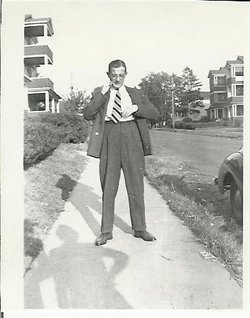
Educational Journey
| Aspect | Details |
|---|---|
| Undergraduate Education | Wallach earned his degree in psychology from the University of Berlin, studying under the guidance of prominent psychologists and physicists who shaped his early views on perception. |
| Graduate Studies | Wallach pursued his Ph.D. in psychology at Harvard University under the mentorship of Edwin G. Boring. His research focused on sensory processes and the perception of motion, laying the groundwork for his later experimental work. |
| Postdoctoral Work | Wallach’s postdoctoral research focused on the psychophysics of perception, where he began pioneering work on how humans interpret visual and auditory stimuli in complex environments. |
| Academic Positions | Wallach joined the faculty at Swarthmore College, where he remained for most of his academic career. His teaching and research were highly influential in shaping the study of perception. |
Influences and Early Career
| Aspect | Details |
|---|---|
| Gestalt Psychology | Wallach was profoundly influenced by the Gestalt School of psychology, which emphasized the holistic nature of perception. His work on visual illusions and motion detection drew heavily on Gestalt principles. |
| Edwin G. Boring | As Wallach’s doctoral advisor, Boring shaped his methodological approach to experimental psychology, emphasizing rigorous empirical testing in the study of perceptual processes. |
| Kurt Koffka and Wolfgang Köhler | Wallach drew inspiration from Gestalt theorists such as Koffka and Köhler, whose theories on perceptual organization informed Wallach’s later studies on depth perception and motion. |
| Optical Illusions | Early in his career, Wallach was fascinated by the phenomenon of visual illusions, which became a central focus of his experimental work. His research contributed to understanding how the brain interprets ambiguous sensory information. |
| Auditory Perception | Wallach’s experiments on sound localization expanded his research beyond visual perception, making significant contributions to the understanding of how humans locate sound sources in space. |
Major Theories and Work
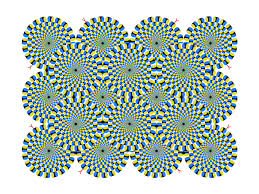
Motion Perception
One of Hans Wallach’s most significant contributions to psychology was his work on motion perception. He conducted groundbreaking experiments demonstrating how humans perceive motion in the absence of actual physical movement.
- Kinetic Depth Effect: Wallach’s research on the kinetic depth effect showed how the human brain can perceive three-dimensional shapes from two-dimensional motion patterns. His findings demonstrated that motion is a powerful cue for depth perception, challenging earlier models that prioritized static visual information.
- Apparent Motion: Wallach’s studies on apparent motion explored how the brain perceives motion when viewing a series of still images. His work contributed to the understanding of how humans process visual stimuli over time and led to advancements in fields such as film and animation.
Image Source: cns.nyu.edu
Wallach also made significant contributions to the study of auditory perception, particularly in the area of sound localization.
- Interaural Time Differences: Wallach’s research into interaural time differences demonstrated how the brain uses the time delay between sounds reaching each ear to determine the direction of a sound source. His work helped clarify the mechanisms by which humans localize sound in their environment.
- Binaural Hearing: Wallach’s findings on binaural hearing—the use of both ears to process auditory information—have been instrumental in understanding how the brain integrates auditory signals to create a coherent perception of sound location.
Image Source: news.mit.edu
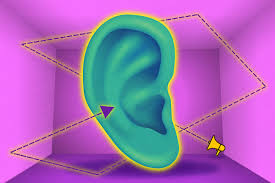
Sound Localization
Famous Books and Publications

On Perception
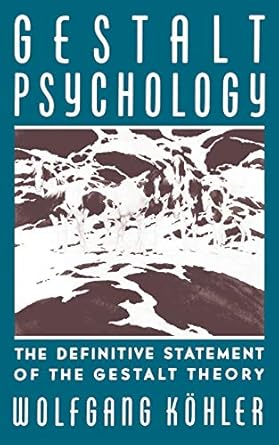
GESTALT THEORY

O lado B de Boni

Die Neue Logik
Influence on Contemporary and Future Psychological Research
- Motion Perception Research: Wallach’s pioneering studies on motion perception have significantly influenced contemporary research on how the brain interprets and processes visual information. His findings have practical applications in fields such as virtual reality and robotics, where understanding how humans perceive motion and depth is critical to creating realistic environments and systems.
- Sound Localization and Auditory Processing: Wallach’s research into auditory perception, particularly on sound localization and binaural hearing, has shaped ongoing studies in how the brain processes sound. His work remains foundational in audiology and acoustic engineering, aiding in the development of hearing aids and sound systems that leverage binaural cues to enhance auditory clarity and localization.
- Visual Illusions and Perceptual Phenomena: Wallach’s experiments on visual illusions continue to be relevant in the study of perceptual phenomena, offering insights into how the brain resolves conflicting sensory inputs. His research has informed contemporary work in neuroscience and cognitive psychology, particularly in understanding how perception is influenced by both sensory data and cognitive processing mechanisms.
Psychologists and Educators Influenced by Wallach’s
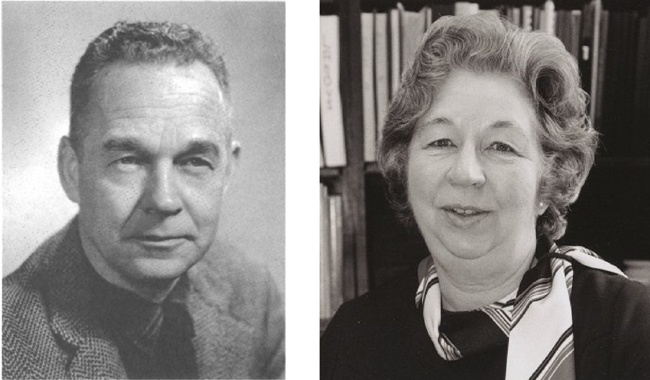
- James J. Gibson: A pioneer in ecological psychology, Gibson’s concept of affordances and perception-action coupling drew heavily on Wallach’s research into motion perception and visual processing. Wallach’s work helped Gibson develop his theory that perception is not just about visual input but also about how organisms directly perceive their environment through interaction, shaping modern understanding of perception in natural settings.
- Irvin Rock: A prominent figure in cognitive psychology, Rock extended Wallach’s research on visual perception and illusions by examining how the brain resolves ambiguous and conflicting sensory information. His work on perceptual constancies, such as shape and size perception, was influenced by Wallach’s studies, leading to more in-depth explorations of how cognitive processes influence the interpretation of sensory data.
- Albert Bregman: Bregman’s influential theory of auditory scene analysis, which explains how the brain organizes sounds into meaningful patterns, was shaped by Wallach’s findings on sound localization and auditory perception.
- Richard Held: Held, known for his work in developmental psychology, applied Wallach’s insights into motion and visual perception to his studies on sensory-motor development. His research, particularly in how visual and motor experiences contribute to perceptual learning in infants and children, was deeply influenced by Wallach’s findings, advancing the understanding of how perception is shaped during early developmental stages.
- Stephen Palmer: A cognitive psychologist known for his contributions to visual perception, Palmer was influenced by Wallach’s pioneering research on perceptual organization and visual illusions.
Impact on Psychology
- Influence on Modern Thought: Hans Wallach’s exploration of perception, particularly his work on motion perception and auditory localization, has profoundly influenced modern psychological thought. His research emphasizes that sensory processing is not merely a passive reception of stimuli but an active interpretative process shaped by both environmental cues and cognitive mechanisms. By drawing attention to the complex interaction between sensory inputs and perceptual interpretation, Wallach has provided a comprehensive framework for understanding human perception. His work has impacted a wide range of disciplines, including cognitive psychology, neuroscience, and audiology.
- Legacy and Recognition: Wallach’s contributions have earned him numerous honors, including recognition from the American Psychological Association for his pioneering work in perception. He was awarded the Warren Medal from the Society of Experimental Psychologists for his contributions to understanding auditory and visual perception. His work has also been recognized internationally, earning him an Honorary Doctorate from the University of Berlin. Elected as a Fellow of the American Academy of Arts and Sciences, Wallach’s influence on the study of perception remains significant in both experimental psychology and applied sciences.
Conclusion
Hans Wallach’s pioneering work on perception, particularly in the areas of motion and sound localization, has left a lasting impact on the field of psychology. His innovative experiments and theoretical insights have advanced the understanding of how humans process sensory information in complex environments. Wallach’s legacy as a leader in the study of perceptual processes continues to influence contemporary research, shaping how psychologists and neuroscientists approach the study of visual and auditory perception.
Bibliography
- Wallach, H. (1939). On Sound Localization. Journal of Experimental Psychology.
- Wallach, H. (1953). The Kinetic Depth Effect. Journal of Experimental Psychology.
- Wallach, H. (1965). Visual and Auditory Perception: Experiments and Theories. Lawrence Erlbaum Associates.
- Wallach, H. (1976). Perception of Lightness and Shadow. Psychological Review.
- Wallach, H. (1983). Binaural Sound Localization and the Human Brain. Harvard University Press.
- Wallach, H., & Boring, E. G. (1942). Motion Perception and Perceptual Constancy. Psychological Bulletin.
- Wallach, H. (1959). Auditory Perception and the Duplex Theory of Sound Localization. Journal of the Acoustical Society of America.
- Wallach, H., & O’Connell, D. (1953). Perceptual Adaptation to Visual Distortion. Journal of Experimental Psychology.
- Wallach, H. (1962). The Visual Perception of Moving Objects. Psychological Monographs.
- Wallach, H. (1970). The Role of Experience in Perceptual Processes. Annual Review of Psychology.
